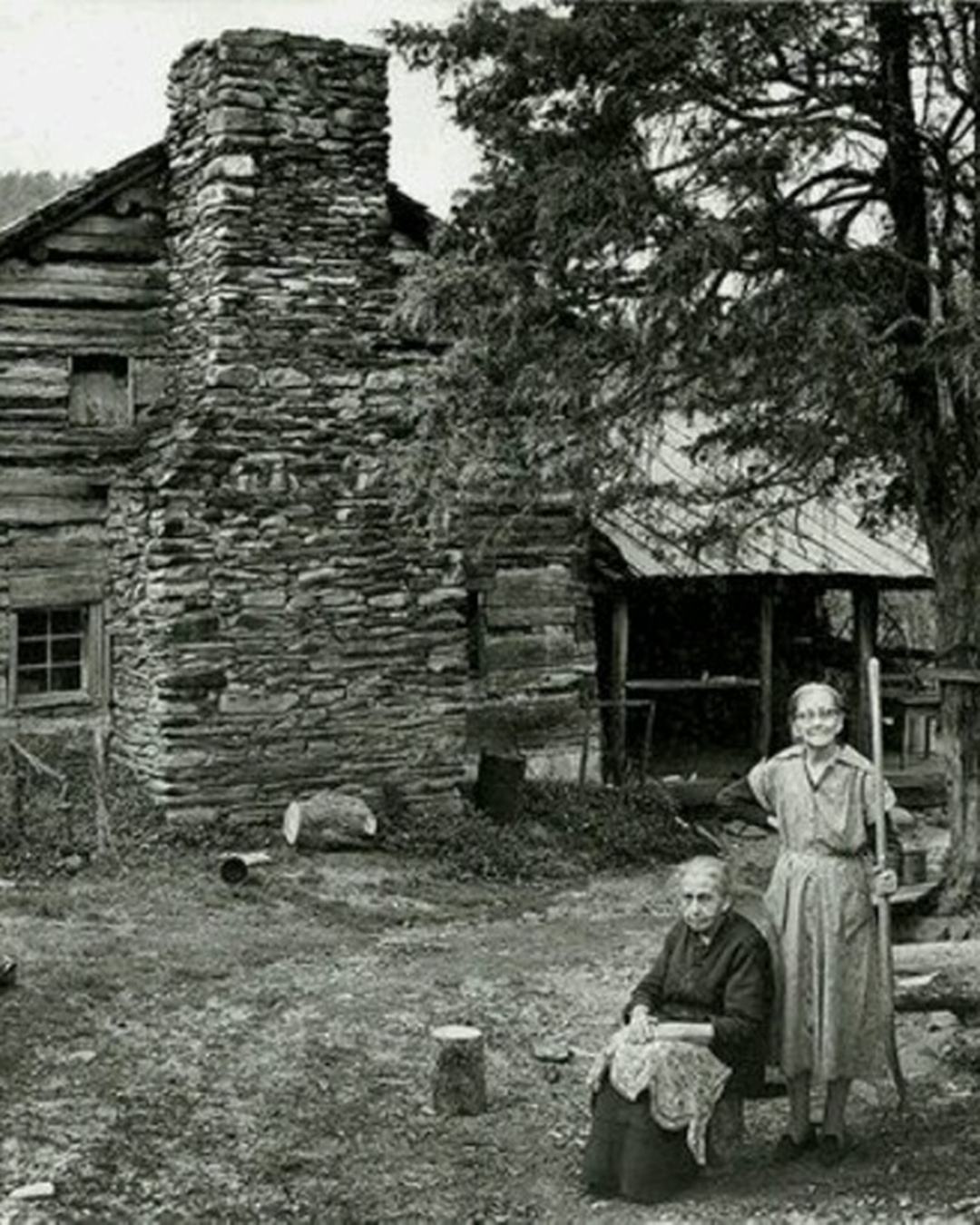The Walker Sisters represent a form of American resilience that is hard to comprehend in our modern world. Deep in the heart of the Great Smoky Mountains, their humble log cabin still stands as a powerful symbol of endurance, faith, and a way of life that refused to be erased. It is more than just a historic building preserved on a park map; it is a testament to the power of family and the unshakeable spirit of Appalachian self-sufficiency.
For those who make the trek along the worn footpath, the cabin is a time capsule, a bridge to a life lived entirely by the rhythms of the seasons and the strength of one’s own hands. This is the story of the women who refused to leave.
A Foundation Built by Hand
The story begins not with the sisters, but with their father, John Walker. He built the original, smaller cabin in the 1800s. A true patriarch, he and his wife Margaret would go on to raise a large family, including 13 children (11 of whom survived to adulthood). The cabin we see today was expanded with the help of his sons around 1870.
This was not a home built from a kit. It was crafted from the land itself. The logs were hand-hewn, the chimney was built from stones gathered nearby, and the modest porch was a testament to the family’s ingenuity. This was the base of operations for a 122-acre farm where the Walkers thrived. They raised sheep for wool, grew corn and apples, and harvested everything they needed from the rugged mountain landscape.
The six sisters who would become famous—Margaret, Martha, Polly, Nancy, Louisa, and Hettie—were born into this world of absolute self-reliance. They were taught not from books, but from action. Their lives were a living series of classes in Appalachian tradition: how to plant by the signs of the moon, how to spin wool into yarn, how to can, preserve, and craft everything the family needed to survive the harsh mountain winters.
The World Changes, The Walkers Do Not
For decades, the Walker family lived in this quiet rhythm. They were deeply connected to their land, their community, and their faith. But in the 1930s, the outside world came knocking, and it wanted their home.
The Great Smoky Mountains National Park was being established. It was a massive, ambitious project, funded in part by the states of North Carolina and Tennessee, and by a massive $5 million donation from John D. Rockefeller Jr. To create the park, the government began buying up tracts of land from the thousands of families who had called these mountains home for generations.
Many families sold and left. Some, however, refused. The Walker sisters, by then unmarried and living on the farm they had inherited, were among them. They were steadfast, determined, and deeply connected to their heritage. This land was not just property; it was their identity.
The park service eventually had to use eminent domain to acquire the land, but the Walker Sisters won a unique victory. In a famous arrangement, they were granted a “lifetime lease.” They could remain in their home, on their land, until the last of them passed away.
The Last Women Standing
As their neighbors departed, the world around the Walker Sisters grew silent. The modern age was rushing forward, but in their small valley, time stood still. A black-and-white photograph taken around 1960 shows the cabin virtually unchanged. They continued to live a 19th-century life well into the 20th. They had no running water. They had no modern conveniences. They never had gas/electricity installed in the home.
They became living legends, a symbol of the “old way” of life. Visitors to the new national park would make the pilgrimage to their cabin, and the sisters would greet them, often selling handmade items or simply sharing their story. They were a quiet, powerful defiance against a world that was rapidly forgetting where it came from.
The last of the sisters lived in the cabin until Louisa passed away in 1964. The very last sister, Hettie, passed in 1966. With her, an entire era of Appalachian self-reliance finally, and quietly, closed.
The Cabin’s Enduring Legacy
Today, the cabin is preserved by the National Park Service, and it continues to tell their story. Visitors who make the walk step directly into the past. Inside, the original furnishings, handmade tools, quilts, and everyday objects remain, whispering of lives lived with hard work and unwavering faith.
This cabin is more than timber and stone; it is a living monument to endurance. It is a place of quiet, emotional recovery for visitors weary of the noise and rush of the modern world. It reminds us that survival was once about perseverance, not comfort. It honors the women who refused to leave, who held onto the life they knew, and who, in their stubbornness, became the guardians of a fading culture.
For those who pause on that porch, running their hands along the grooves of the weathered logs, the cabin offers more than history. It offers perspective. It speaks of a time when joy was found not in excess, but in the simple, profound act of living faithfully with the land and with each other.
Generations later, the legacy of the Walker Sisters continues to inspire. Hikers, history lovers, and schoolchildren walk the same worn path, standing where the sisters once stood, imagining the smell of woodsmoke and the quiet rhythms of a life lived with purpose. The cabin remains, a bridge between past and present, a story of the Appalachian spirit preserved forever in logs, stone, and memory.


